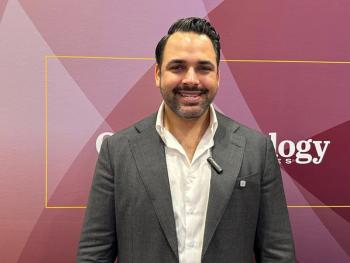
Postmarketing experience impressive for myopic correction with posterior chamber phakic IOL implantation
An analysis of data from 5,300+ eyes with a posterior chamber phakic IOL (Visian ICL, STAAR Surgical) implanted by more than 400 surgeons are impressive in demonstrating the safety, predictability, and efficacy of this lens for correcting moderate to high myopia. Mean follow-up was 103 days, mean UCVA was 20/26, mean MRSE was –0.23 D, and the mean endothelial cell loss rate at 3 months was 1.7%.
Key Points
Chicago-Outcomes in a cohort including more than 5,000 eyes support the conclusion that implantation of a posterior chamber phakic IOL (Visian Implantable Collamer Lens, STAAR Surgical) is a safe, predictable, and very effective method for correcting moderate to high myopia, said John R. Moran, MD, PhD, at the annual meeting of the American Society of Cataract and Refractive Surgery.
Dr. Moran presented findings from a retrospective analysis of physician-reported data that was entered voluntarily by more than 400 operating surgeons on the online STAAR Surgical planning service (
Preoperatively, mean uncorrected visual acuity (UCVA) was 20/1553 (range, 20/160 to 20/8000), mean best-corrected visual acuity (BCVA) was 20/22 (range, 20/10 to 20/80), and the mean preoperative manifest refractive spherical equivalent was –9.81 D (range, –3.75 to –24.00 D). Mean astigmatism by refraction and keratometry was about 1.0 D, with maximum values of 8.5 D by refraction and 10.9 D by keratometry.
"Perhaps most impressive is the fact that the vision in more than 500 eyes is better after surgery than it was before the [lens] implantation under any circumstances, and the endothelial cell loss data provide evidence that this is a safe procedure," said Dr. Moran, a practicing cataract and refractive surgeon in Houston and chief executive officer of PreVize Software and Services, a company that specializes in surgical planning and optimization software.
"Overall, however, the uniformly excellent outcomes in this series of eyes are remarkable considering the number and diversity of surgeons and patients. We attribute this to the quality of the [lens] and the precision and accuracy of the . . . optimized IOL power formula [Optimized Power Formula, PreVise]," said Dr. Moran.
In the online surgical planning service that was used as the database for the analysis, surgeons enter the patient's preoperative data and the software performs the power calculations using the formula. Then, the IOL is ordered online. Surgeons also can use the Web-based tool to record their postoperative data and then analyze their results, using the findings to optimize their outcomes further.
The patients included in the postmarketing analysis were aged 16 to 70 years (mean, 38 years); 18% of the procedures were bilateral sequential surgery.
There were 2,005 eyes in males and 3,362 eyes in females. Off-label uses were represented in the cohort by eyes that were post-LASIK, pseudophakic eyes that received the IOL as a secondary implant, eyes with trabeculectomy, and eyes that underwent bioptics procedures because their refractive error was outside the range fully correctable with the IOL.
Preoperative SE clustered between –8 and –12 D for the majority of eyes. Postoperatively, the majority of eyes were within 0.25 D of emmetropia, and more than 75% were ±0.50 D.
"The mean absolute prediction error, which reflects the spread of the results around the intended target, was 0.5 D. The mean accuracy, which reflects the distance to the intended target, was 0.1 D. Both of those measures are remarkably high given the level of myopia and diversity of patients and surgeons represented," Dr. Moran said. Postoperative UCVA ranged from 20/10 to 20/50 and was 20/25 or better in more than 75% of eyes.
Newsletter
Don’t miss out—get Ophthalmology Times updates on the latest clinical advancements and expert interviews, straight to your inbox.



















































.png)


